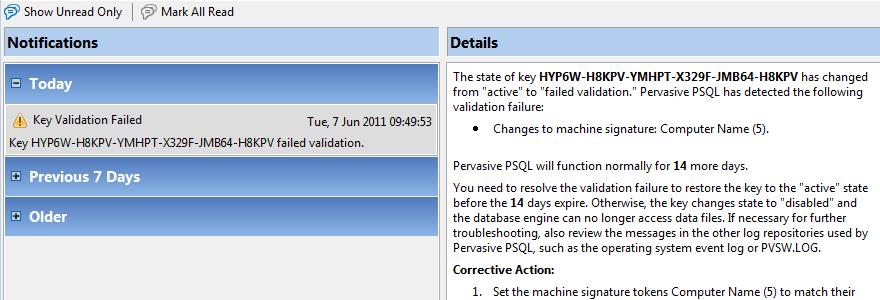|
The number of days provided to correct the failed validation have expired. The conditions causing the failed validation were not corrected before the expiration. The key is no longer valid and the database engine cannot access data files.
|
|||
|
See To Display Remaining Authorizations in Pervasive PSQL User's Guide, PvValidateLicenses() in Distributed Tuning Interface Guide, and ValidateLicenses in Distributed Tuning Objects Guide.
|
||
|
1Message logging follows a one-way hierarchy: any licensing message logged to Pervasive Notification Viewer is also logged to the Operating System Event Log and to the Pervasive PSQL Event Log. Similarly, any licensing message logged to the Operating System Event Log is also logged to the Pervasive PSQL Event Log.
|
||

|
To “read” a message: click on (select) the message. Once selected, the typeface for the message changes to a regular typeface.
|
|
|
Sets the type of protocol used by the SQL Connection Manager. This must be set to TCP.
|
|
|
LogEvent=msg_type
|
Specifies one of the following values for msg_type to indicate the type of messages logged to event.log (the default is 1):
|
|
Table 24
|